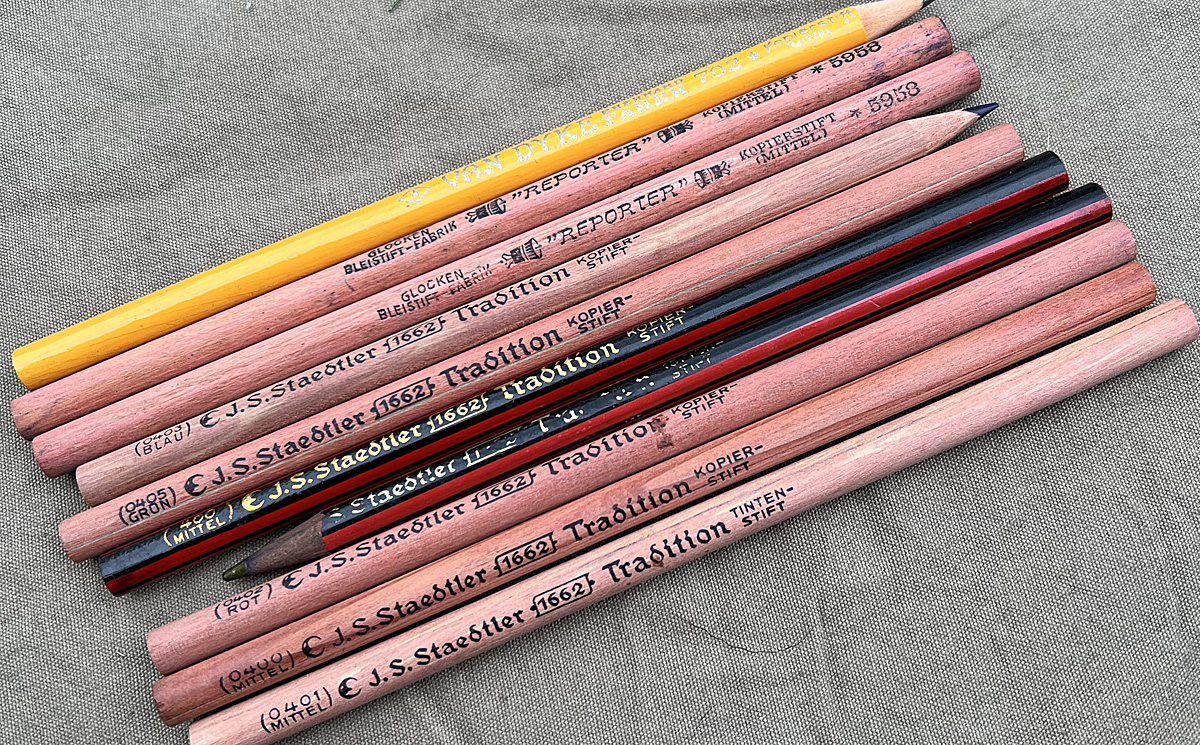Last updated on April 30, 2023
I have been asked many times about the “purple pencil” often seen used for signatures in WWII German documents. The fact is, there was no one specific shade of pencil used, it was not always purple, and it was not really just a pencil. Prior to the widespread use of ballpoint pens, indelible pencils were common everyday instruments used for everyday writing. This type of permanent pencil, called “Kopierstift” or “Tintenstift” in German, and sometimes “copying pencil” in English, used a lead that contained not only powdered graphite and clay like regular pencils, but also a permanent dye that was activated by moisture. This dye, once exposed to the moisture in the air, bonded with paper and could not be removed. When these pencils were invented in the 19th century, they most commonly used a purple dye, and purple dye remained most common through the post-WWII era when ballpoints made them obsolete. But many used blue dye, or other colors, too. Some of these pencils used colored leads that produced colored writing, awhile others used leads containing regular graphite and the dye. When these pencils were used, the writing initially would look much like that of a familiar, standard graphite pencil, but the moisture in the air would eventually activate the dye and change the color of the writing. Vintage indelible pencils are not hard to find, and in fact indelible pencils, even purple ones, are still being made today, and I discuss those at the end of this article. That’s the short answer. If you are interested in a more detailed look at wartime indelible pencils, read on.
First, let’s look at some original examples of writing using indelible pencils. All of these are from original examples of the Soldbuch, the standard identity document carried by German soldiers in WWII. Here are some typical examples of signatures in purple pencil. You can see there are various shades used. These pencils were made by many manufacturers (we will look at some original pencils later on) and they were not standardized.

Here are some signatures in various shades of blue indelible pencil.
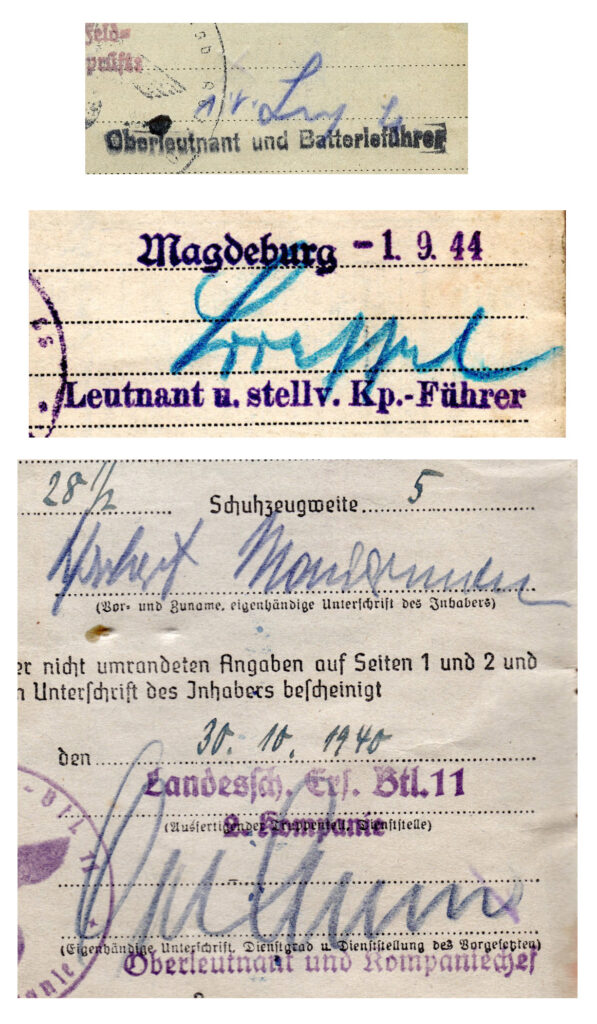
Some of the indelible pencils used at the time, created writing that looked much like that of regular graphite pencils we still use today.
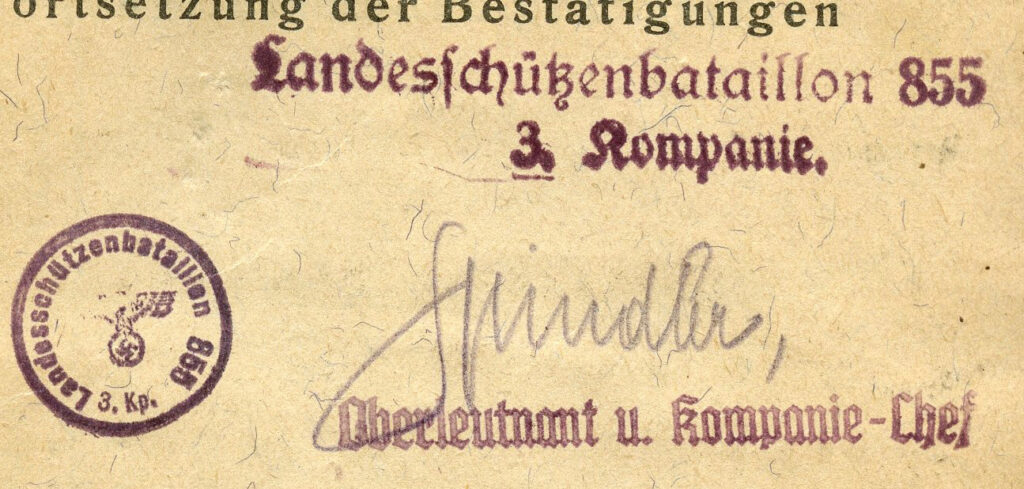
Red is another copying pencil color that was in use during the war.
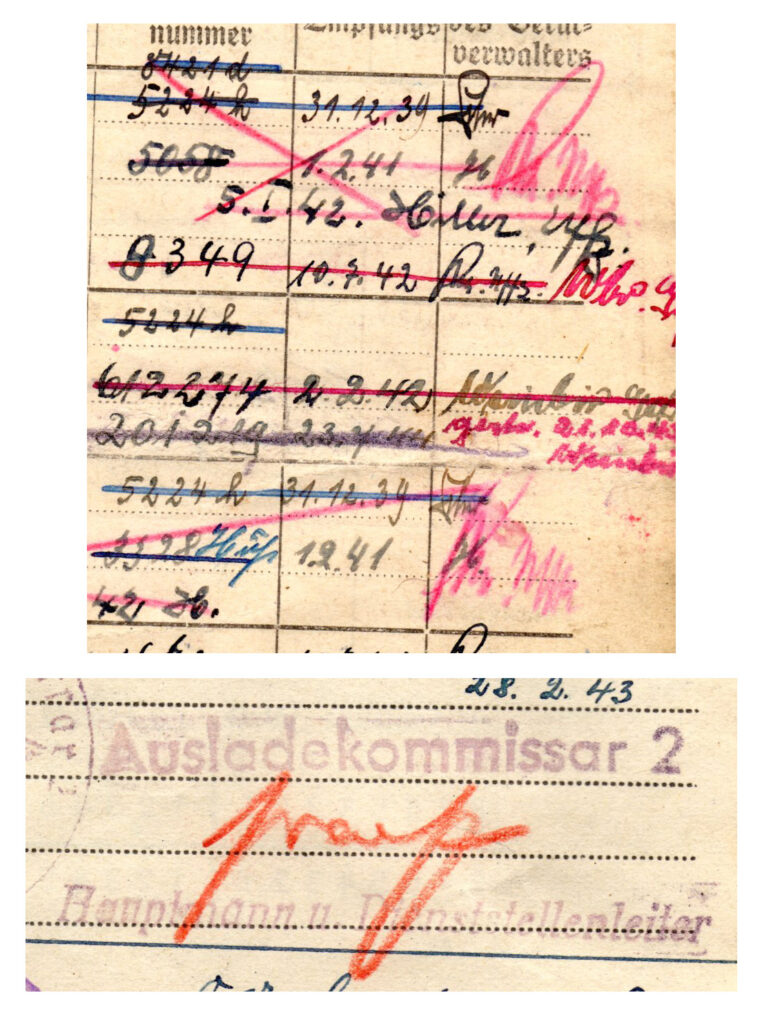
In the following examples, writing in different shades of purple, blue and gray can be seen on each page. As you can see, there was no officially mandated color shade. They used what was available, from commercially available products made by many manufacturers.
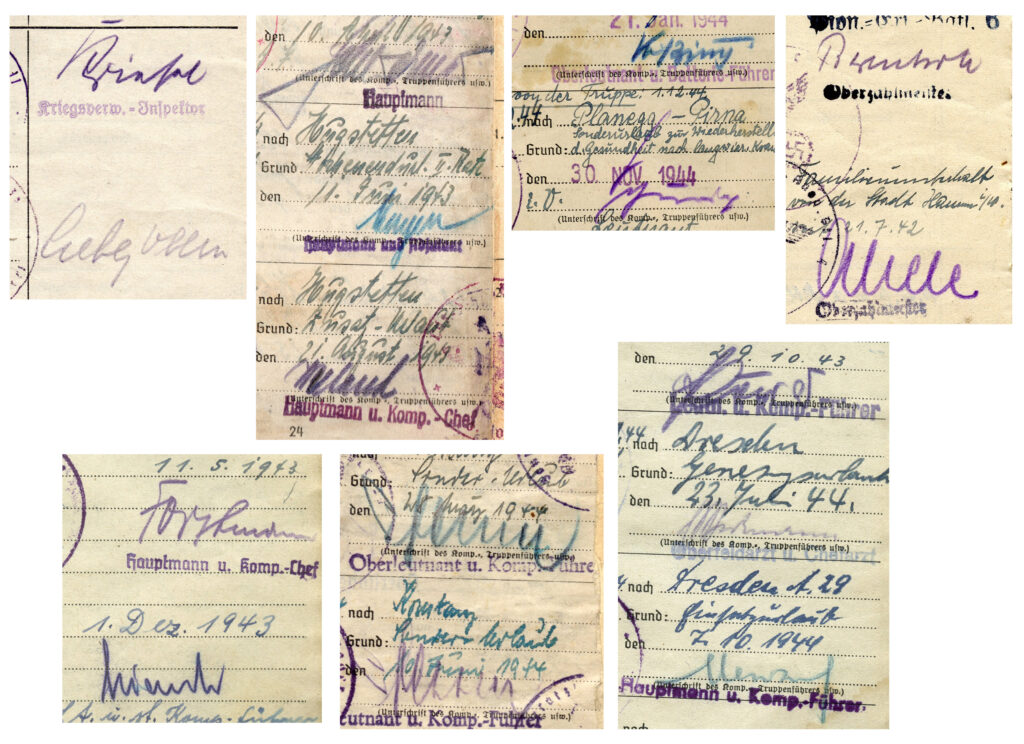
Indelible pencils were not just used for signatures. In these examples, indelible pencils were used to make hospitalization entries, an immunization record, and also to record issue of equipment including an entrenching tool and an MP40 submachine gun.
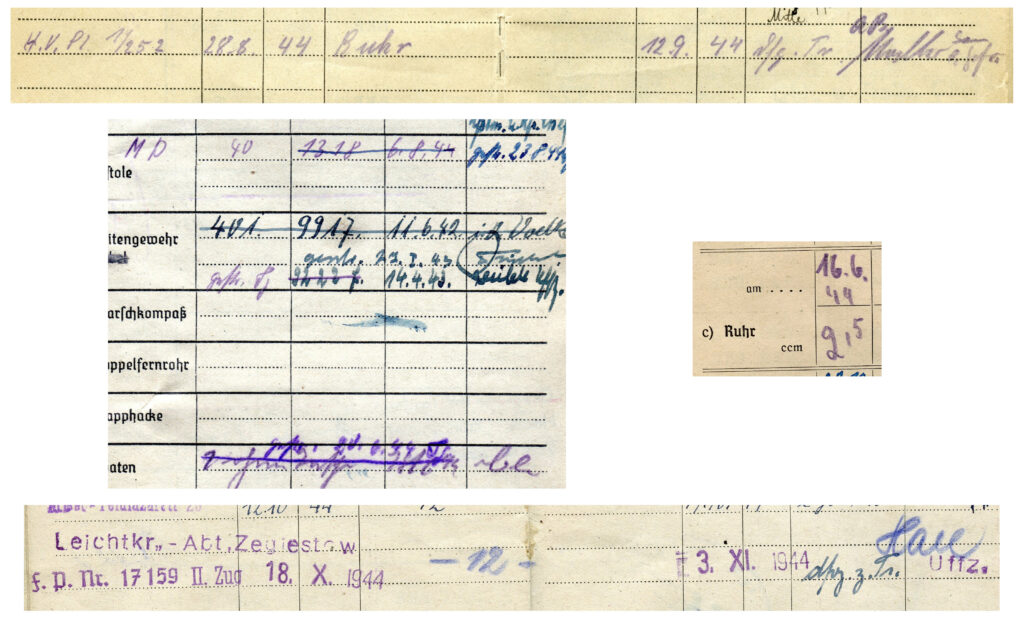
Several years ago I had the opportunity to purchase leftover stocks from a store in Germany that had closed long ago. The items in that lot mostly dated from the 30s and 40s, with some older items as well as a few early 1950s products. Most of the pencils I will show here came from that supply. Pencils, generally, do not have dates printed on them, and it can be hard to pinpoint exactly when they were made. I think these pencils give a good general overview of what was in production and available during the WWII period. First, let’s look at the standard, basic Kopierstift copying pencils. These pencils write gray, then the writing turns purple or perhaps bluish- not immediately, but with time. Here are some “Stabilo” brand pencils from Schwan. Some of these are marked “D.R.P.,” indicating a Reich patented design.

These pencils were made by A. W. Faber and by other companies that were spin-offs of the Faber pencil dynasty. You will note that these indelible pencils are mostly round in cross section. Regular graphite pencils of the era were usually hexagonal, though there were exceptions to this.
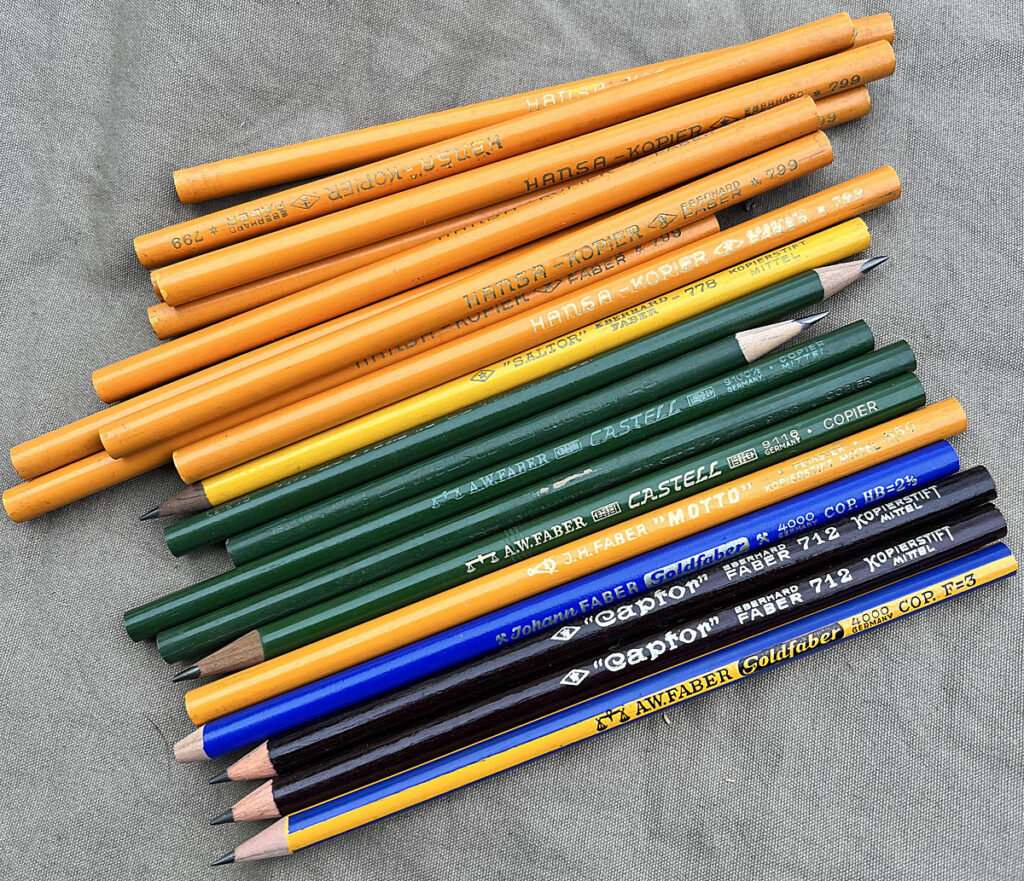
More of these indelible pencils from various manufacturers.

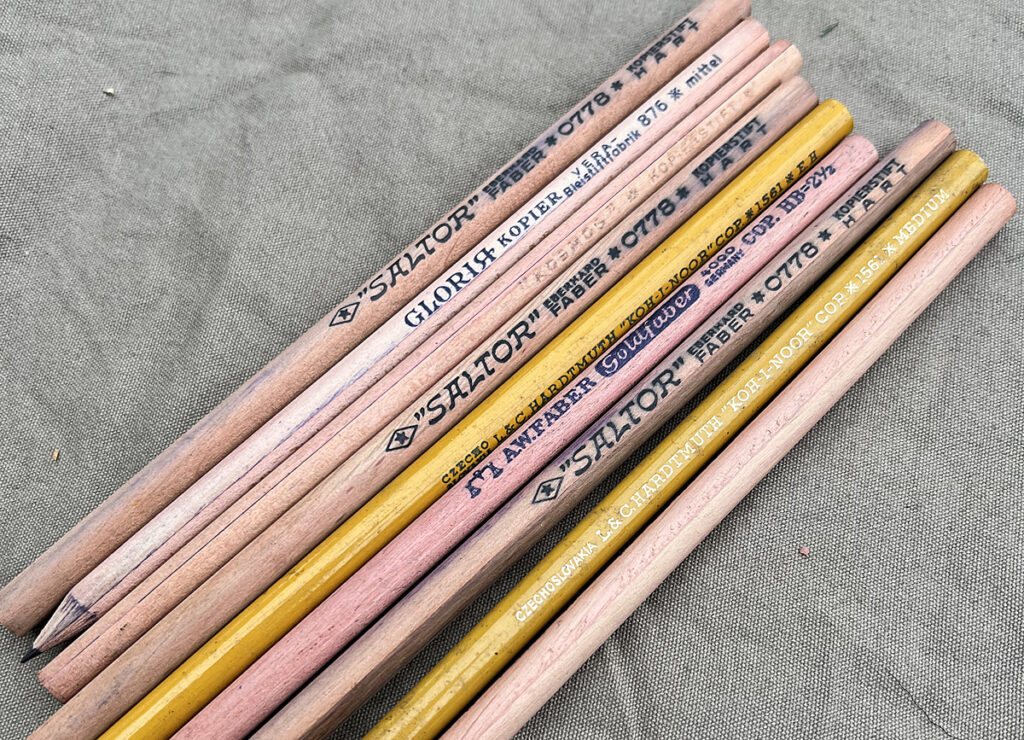
Here are some purple indelible pencils. These pencils would write purple, and the purple dye made the writing permanent. These are probably what people are thinking of when they think about “the” WWII German purple signature pencil. These are from A. W. Faber.
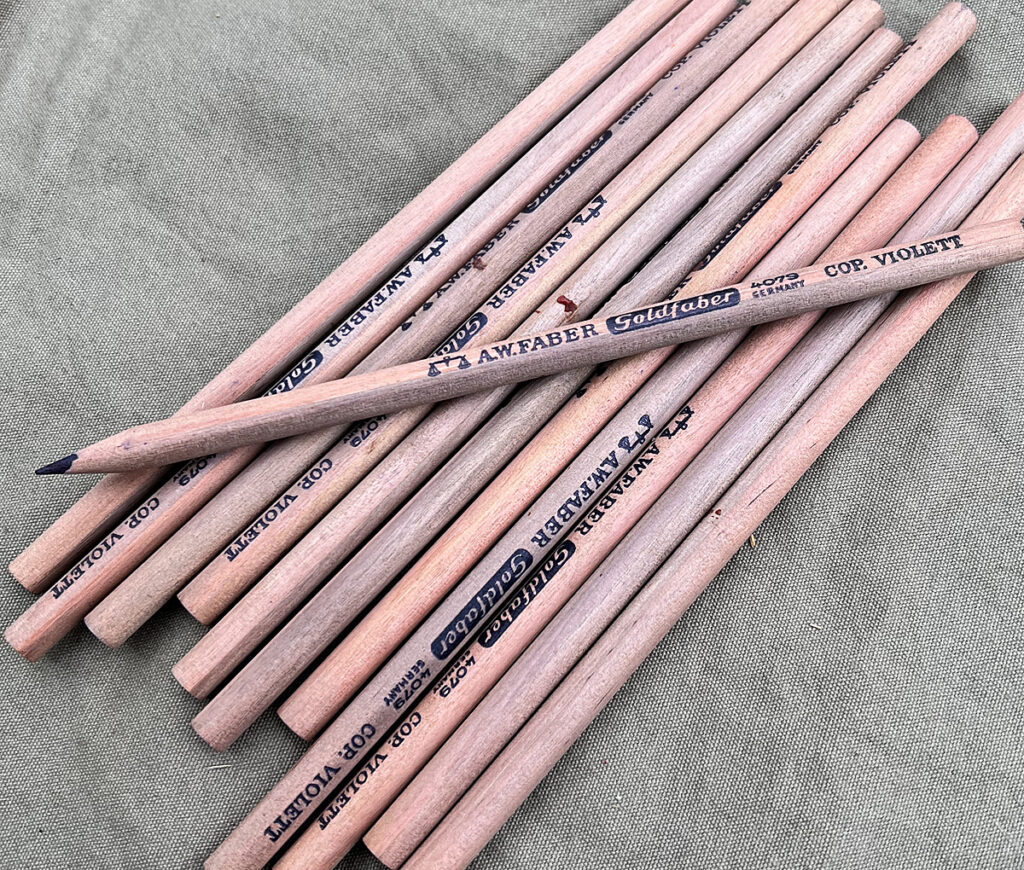
Here are some purple and “deep purple” pencils from Schwan, again showing some Reich patent markings.

Here are some period Kopierstift pencils in other colors: matte black, red, green, two different blue shades, and yellow.
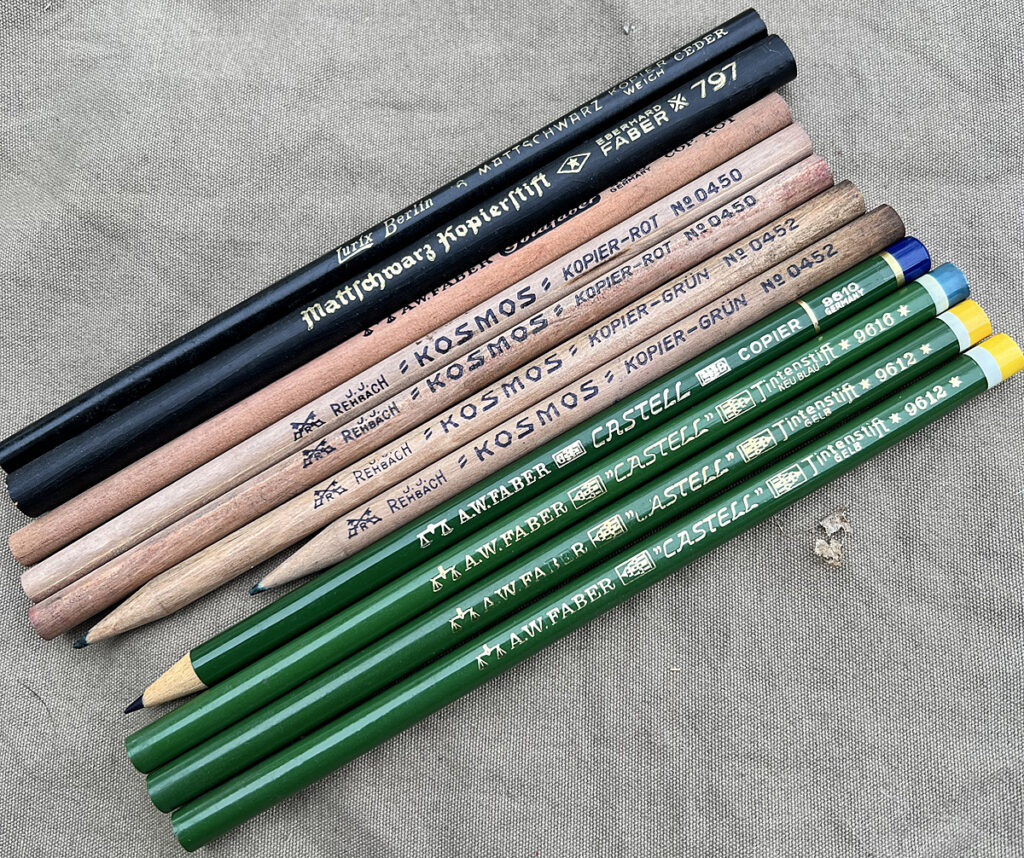
Here is a box of “Kosmos” Kopierstift pencils, unused, new old stock.
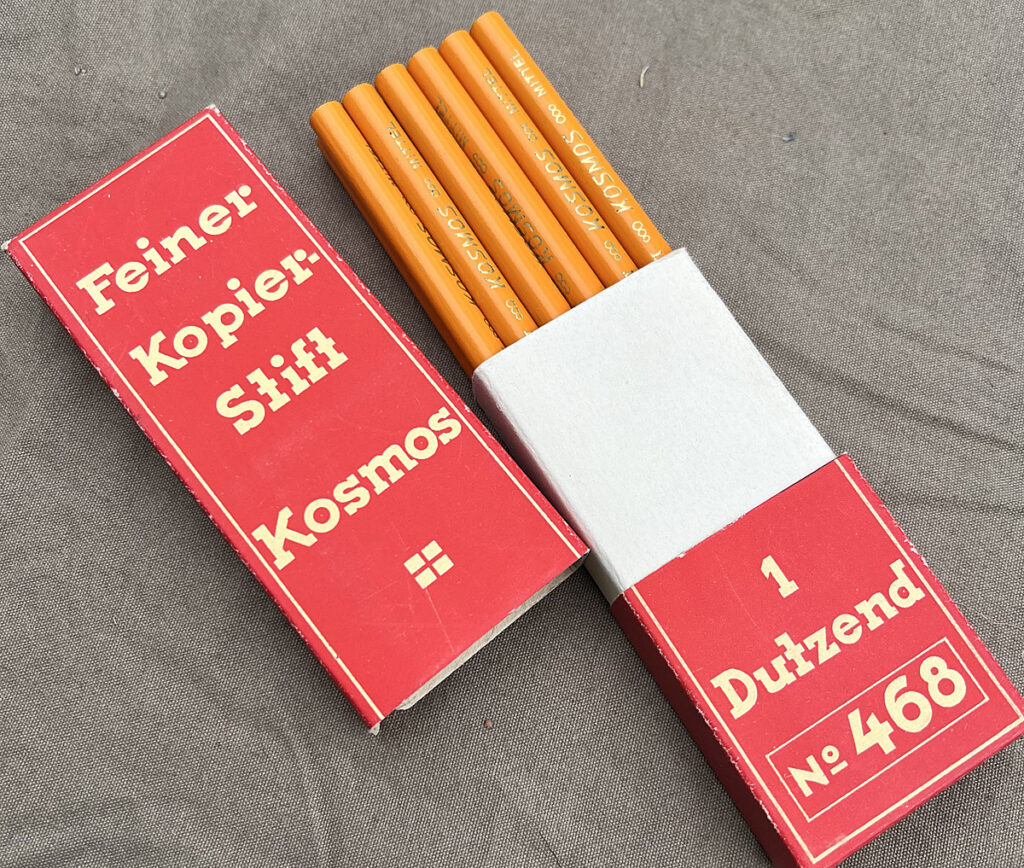
The bottom of the box is marked with “D.R.G.M.” indicating a Reich copyrighted design.
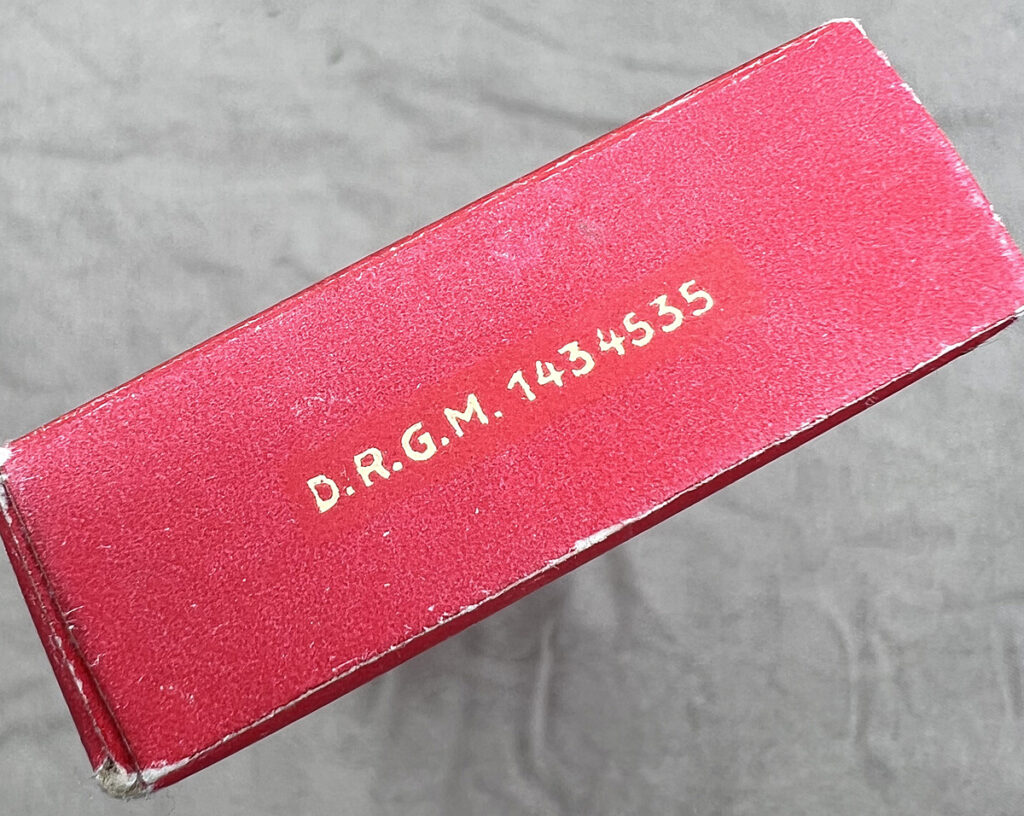
As I mentioned at the start, indelible pencils are still being made today. A. W. Faber is now Faber-Castell, and they still make indelible pencils in Germany, which they sell as “Document” pencils, in red and blue. “Veritas” indelible pencils, made in the USA, are available in purple. At the time of writing (2023) new made purple copying pencils from the Portuguese company Viarco are still available. These pencils have a vintage look and even come in a retro style package that would not look wildly out of place on a wartime writing desk.
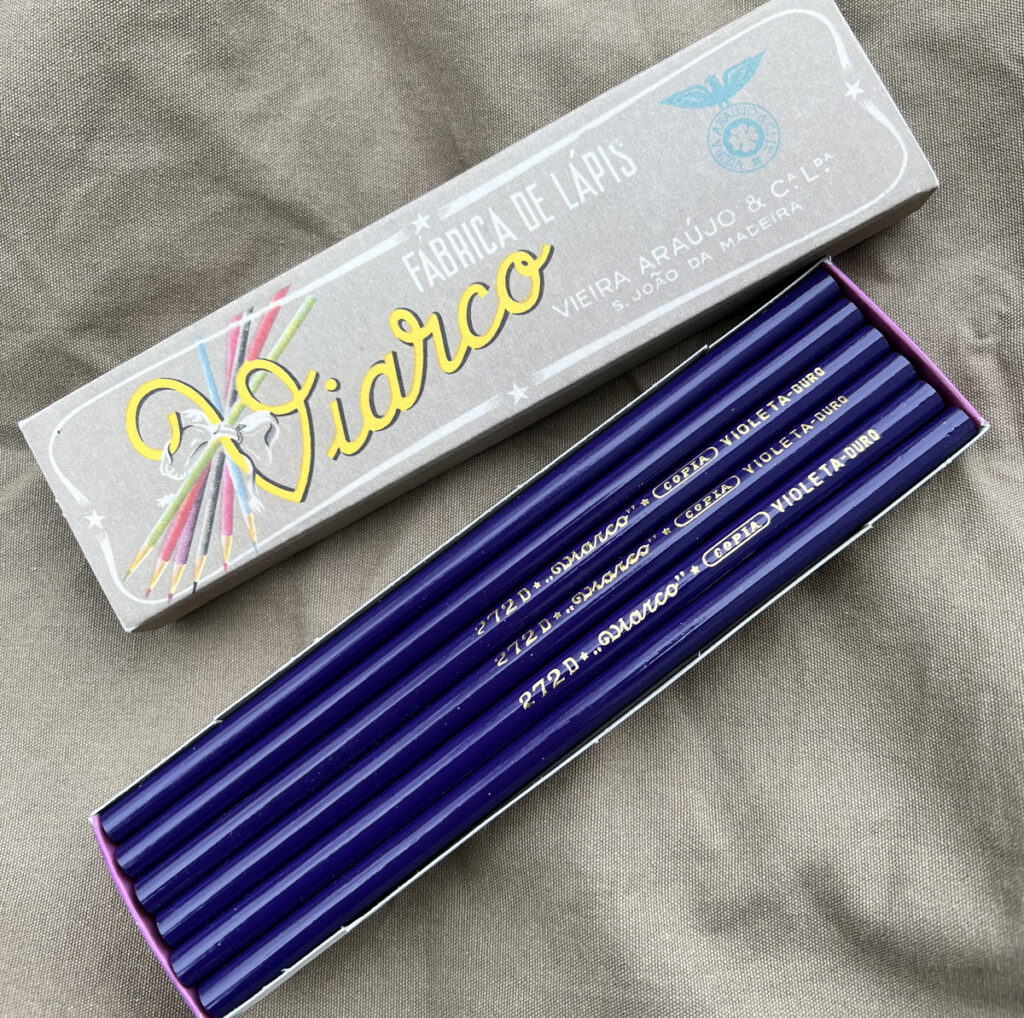
As with fountain pen inks, using a variety of pencils helps create the illusion of entries made by different people at different times.
